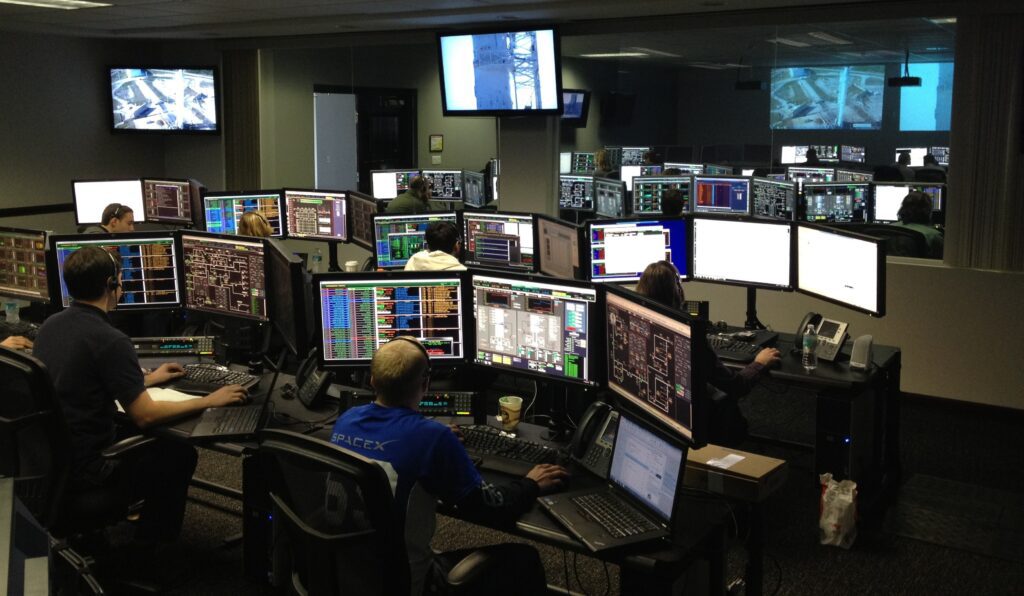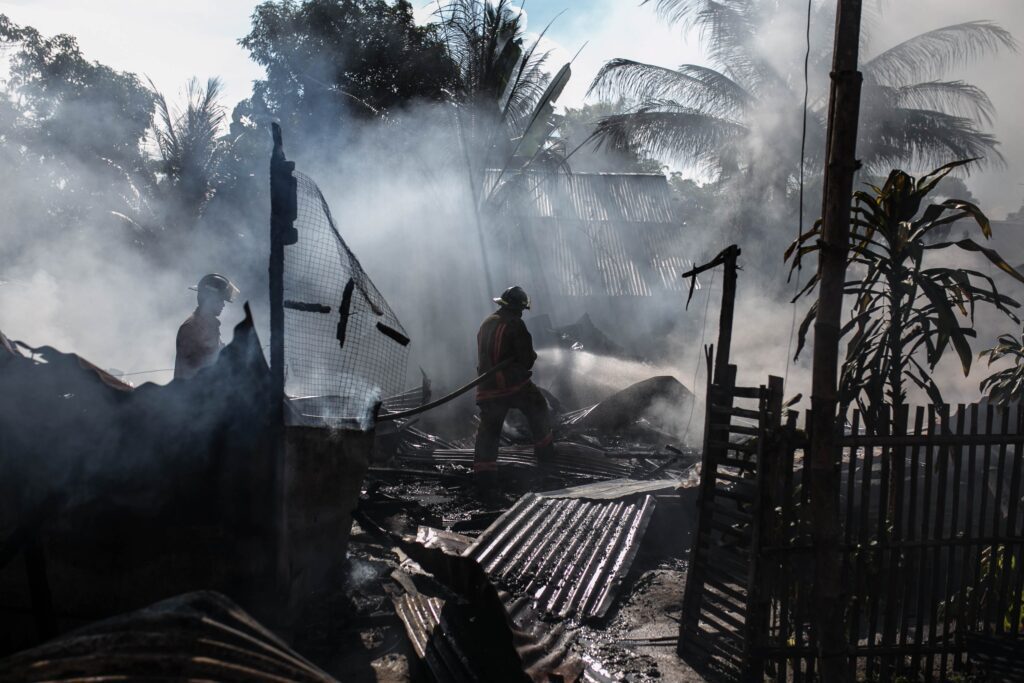Emergency Responder Communication Systems
Emergency Responder Communication Systems: Critical for Disaster Response
Across the U.S. are thousands of Emergency Responder Communication Systems (ERCS’s), that we depend on everyday for critical incident response. These vital systems consist of critical two-way radio communications for coordinating emergency response resources.
These systems are critical for all levels of emergency and incident response. This includes: emergency and first responders, public safety, EMS and law enforcement. These systems are used within agencies and municipalities, but are also used across jurisdictions. We need these systems proper Coordination, Command and Control and to provide Situational Awareness for vital emergency responder resources. In this article we specifically look at:
- The main goal of Emergency Responder Communication Systems
- The evolution of Emergency Responder Communication Systems
- Technology’s Impact on Emergency Communications
- Design considerations
- System Vulnerabilities
- Effective Public Safety Communications Solutions
The Main Goal of Emergency Responder Communication Systems
A well-designed emergency responder communication system covers all aspects of capability, reliability and resiliency. To summarize:
The main goal of an Emergency Responder Communications System (ERCS) is to have reliable and resilient communications, at all times, for any emergency situation.
“At all times” is the critical element. We all need this capability, but few of us actually have it. While basic, having reliable and resilient communications, at all times, is not easy to achieve. Why? All Emergency Communications Systems across the U.S. have vulnerabilities and weaknesses that can cause them to fail.
At some point, nearly every community has experienced a critical incident where communication failures occurred. These failures were later identified as a root cause for cascading events beyond the incident itself. Cascading events greatly magnify and worsen outcomes. The main cause of Cascading Events are failures found in the basic design of our emergency communication systems.
Emergency Responder Communication Systems Evolution
Much of what is in place today for public safety emergency communications evolved from the mid 20th century designs. This came from the design of early two-way radio systems. Understanding these early systems provides perspective on how our systems evolved. This evolution shaped the current systems we use today.
Earlier systems used both “Direct Wave” and “Ground Wave” to carry signals to and from first responders. The Direct Wave provided “line of site communications” (1-10 miles). Ground Waves carry signals from 10 to 50 miles. Earlier systems used frequency ranges in the High Frequency (HF) radio bands. Similar to Citizens Band radio.
The main problem with early systems is they used AM signals. AM is very susceptible to noise, static and atmospherics. As a result, communications were difficult since transmissions could be become garbled. This created many problems.
Moreover, phasing could occur. This happened when signals would bounce off structures and arrive at different times. This distorted what the receiver would hear. Many work arounds were created like “10 codes” and phonetic alphabets to help with understanding unclear communications.
Ultimately, across the U.S., emergency two-way communications migrated from this older technology. Our emergency communications systems evolved to newer systems without these issues. However, these older systems had some advantages. These older systems didn’t need repeater systems to function.
Technologies’ Impact on Emergency Responder Communication Systems
The characteristics (how far a signal can travel) at higher frequencies is very different from lower frequency characteristics. Higher frequency FM communications provides “line of sight” communications.
Today’s Emergency Responder Communication System Design
As a result, nearly all public safety, and emergency response communications occurs over networks of “line of sight” FM systems. These systems provide communications up to 60 miles or more.
This typically includes some variation of the elements below:
1. Line of Sight FM communication systems across one or several bands of the VHF or UHF spectrum. This is in the frequency ranges of 150-174 MHZ, 450-470 MHZ, and 700/800 MHZ.
2. A network system of towers and repeaters across a metropolitan area or region.
3. Mobile Radio Systems that are installed in public safety vehicles. These may also connect to a multitude of critical devices in the vehicles themselves.
4. Portable radios known as “handhelds” that emergency responders carry on their person. These handheld radios may transmit directly to the repeater towers or may connect to the mobile radio system in their vehicle.
5. Centralized Operations/Dispatch Center-These facilities are often collocated at a 911 PSAP facility, where emergency calls from the public are also directed.
Emergency Responder Communication System Vulnerabilities
The design above in most cases consists of interdependent systems. This is why most emergency communications systems are vulnerable to failure. An interdependent system is a system that depends on another system in order to function. Most of our emergency communication systems have many links in the chain. Every link needs to work in order for these systems to function. As a result, these systems are only as resilient as their weakest link.
For example, any system that depends on a network of any kind is by definition an interdependent system. When a critical node in the network fails (a repeater tower), the entire system can break down. Repeaters and towers have a long history of failure in critical incidents or disaster events. This especially true during natural disaster events. Yet our wide dependence on repeaters across the U.S. is nearly universal.
Hidden Vulnerabilities
Additionally, there are also hidden interdependent systems vulnerable to failure that aren’t as obvious. For instance, any system that depends on any form of infrastructure (including roads) to function is also highly vulnerable to failure.
Examples of infrastructure dependent systems include:
1. Any system that depends on any form of network- This includes: cellular networks, repeaters and tower systems or the internet.
2. A system that depends on the commercial power grid.
3. Systems depending on roads- This includes emergency command centers, mobile command vehicles, or mobile communication vehicles.
4. Any system that depends on fossil fuel- For example, generators that require refueling. Systems depending on generators are also dependent on roads and the power grid for resupply. Likewise, mobile command vehicles also depend on refueling for sustained operations.
5. Systems that cannot be isolated from other systems are vulnerable. Any system that can’t be isolated is vulnerable to cyber attack from networks or grid systems.
Most of us involved in Emergency Communications know we have vulnerabilities. We attempt to mitigate vulnerabilities by adding technology to solve known gaps. As a result, many of our Public Safety Communications Systems across the U.S. have simply “evolved” into their current state.
Many of our systems were constructed by adding components piece by piece in an effort to solve such problems. As a result, very few of these systems have been constructed with a comprehensive holistic architecture. These same components that were added over time made many of our systems more complex and created potential points of failure.
Effective Public Safety Communications Solutions
So how do we solve the vulnerability problem? How do we attain reliable and resilient communications for any situation, at all times? You need a system that doesn’t dependent on any infrastructure whatsoever and doesn’t have the same vulnerabilities as our current mainline systems. You need reliable communications for EVERY situation you encounter.
The ideal system should at a minimum:
1. Not depend on any form of outside power or generator for sustained operations.
2. Be highly portable, easily deployable and tactically nimble.
3. Should not depend on any other infrastructure system in order operate including repeaters, towers, network systems, or roads.
4. Should provide protection from all hazards and critical incidents

Communities and organizations can have increased response time and uninterrupted disaster response without the high price tag of a cumbersome mobile command vehicle.


If your existing mobile command vehicle lacks the ability to function without power, roads or networks, SemperComm provides solutions.

In an extended emergency or disaster it is understood that the first 72-hour window is when you as a responder have the greatest opportunities to minimize impact and save lives. Are you prepared?

Have Questions?

SemperComm® does not rely on infrastucture to accomplish the mission.
To learn more about SemperComm® or for sales or questions, contact us.
About SemperComm® (“Always Communications”)
SemperComm’s Portable Command Center is the only system available today that does not need any infrastructure in order to operate and provides all the mission critical capabilities above. You can learn more about our patented Portable Command Center Here.
SemperComm® Systems is an Emergency Management consulting firm that provides emergency management services and emergency communications products. To learn more about how SemperComm® can meet your needs contact us.
